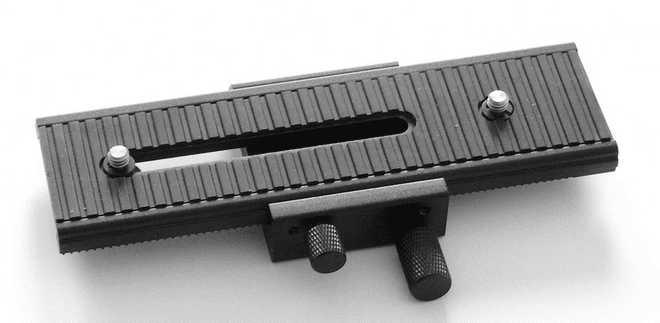Single Axis Fine Movement Rail
Product code:
UM1300B
A versatile single axis slider that can be mounted easily onto the UM1004 stand and on most other stands or a tripod. This rail can be used horizontally or vertically, although we think it is best in a horizontal position. It has 100mm of travel on a rack and pinion controlled by turning a knob.
£24.95
£29.94 (inc. VAT)
£35.95
A versatile single axis slider that can be mounted easily onto the UM1004 stand and on most other stands or a tripod. This rail can be used horizontally or vertically, although we think it is best in a horizontal position. It has 100mm of travel on a rack and pinion controlled by turning a knob. The movement has a graduated scale. There are two 1/4 in tripod mounts on the top surface one of which has an adjustable position. There is a further 1/4 in tripod mount threaded hole on the underside. The top surface is rubber coated.
Overall Dimensions LWH (mm): 160 x 85 x 20 (when lying horizontally)
Maximum Travel (mm): 100
Weight (g): 216
Customer reviews
| Brand | Ultramacro |
| Condition | New |
| Product Code | UM1300B |
| Weight | 0.3kg |

-755-p.png?w=121&h=121&v=7802821E-293D-4A0F-A26A-033E89BFF206)
-755-p.png?w=121&h=121&v=C0AA34F5-5DDF-4C4B-8BC6-876682B27C02)
